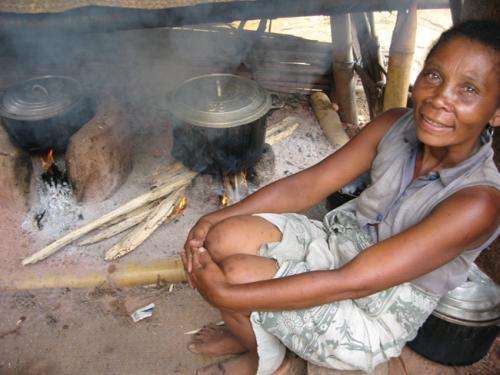Tailored approach key to cookstove uptake

Worldwide, programs aiming to give safe, efficient cooking stoves to people in developing countries haven't had complete success—and local research has looked into why.
The review by Tania Urmee and Samuel Gyamfi from Murdoch University's School of Engineering and Energy found people's uptake of cookstoves was largely dependant on social, economic and environmental factors specific to each region.
Cookstove programs were introduced in the 1980s by major government and non-government organisations in an effort to address the social, health and environmental hazards associated with traditional cookstoves.
Dr Gyamfi says traditional cookstoves have numerous impacts, including health problems from combustion and the time spent collecting wood for fuel.
"[As well as] time spent on cooking due to poor efficiency and effect on deforestation and greenhouse gas emissions," he says.
In contrast, improved cookstove technologies given out through global cookstove programs have chimneys or smoke-hoods, as well as insulating material like mud or clay which conserves the heat and improves efficiency, thus reducing the cooking time, fuel use and cost and greenhouse emissions.
The researchers assessed the success of various cookstove programs that have been running across Africa, Asia, and Central America and the Caribbean.
These included Zimbabwe's Tso Tso Stove Program, the Chinese National Improved Stove Program, the Indian National Biomass Cookstove Initiative, programs in Indonesia, Nepal and Bangladesh, the "Recho Mirak" improved charcoal stove in Haiti, and the Social Investment Fund in Guatemala.
Overall, they found the success of the programs to be quite varied—some achieved their goals while many failed.
Numerous socio-cultural factors, in addition to environmental and economic influences, were vital to their success.
Dr Gyamfi says successful programs need to match the technicalities of working the stove with social expectations, be consistent with local cultural needs and in tune with users' attitudes; like those that are afraid to adopt new technologies.
"Also, programs that use a 'bottom-up' strategy, where users and local artisans are involved in the design, testing and distribution process to establish a self-sustaining industry," he says.
"The programs were found to be successful in places where biomass fuel is expensive or difficult to find.
"Stove cost is mentioned in a few studies as being important for program success as well."
Dr Gyamfi and Dr Urmee emphasise programs that distribute stoves with a proven efficiency, take into account local cultural cooking practices and socio-economic backgrounds and ensure local community participation will be successful.
More information: Tania Urmee, Samuel Gyamfi, "A review of improved Cookstove technologies and programs," Renewable and Sustainable Energy Reviews, Volume 33, May 2014, Pages 625-635, ISSN 1364-0321, dx.doi.org/10.1016/j.rser.2014.02.019.
Provided by Science Network WA



















